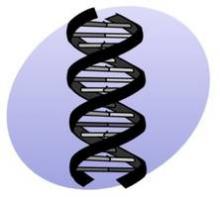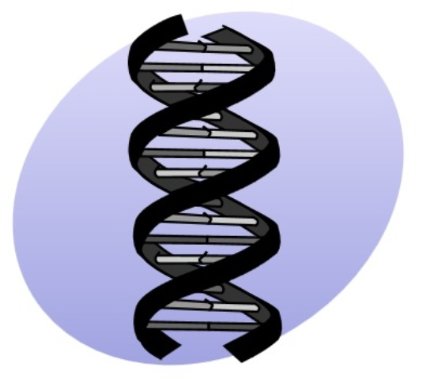User login
Mutations in the CYP2C genes on chromosome 10 appear to predispose carriers to severe adverse cutaneous reactions to the antiepileptic drug phenytoin, according to a report published Aug. 5 in JAMA.
Researchers performed a genome-wide association study of more than 850,000 single-nucleotide polymorphisms (SNPs), followed by direct sequencing of the genes identified as suspicious, to investigate possible genetic factors associated with severe phenytoin-related cutaneous reactions. Phenytoin – the most frequently used first-line antiepileptic agent in hospitalized patients, which is also effective for other neurologic disorders – is known to cause cutaneous reactions ranging from mild rash to life-threatening eosinophilia, Stevens-Johnson syndrome, and toxic epidermal necrolysis, said Dr. Wen-Hung Chung, of the department of dermatology at Chang Gung Memorial Hospital, Taiwan, and his associates.
The study participants were 168 Taiwanese patients taking the drug who developed cutaneous reactions, including 13 who died from those adverse events; 130 Taiwanese patients who were tolerant of phenytoin; and 412 controls from the general Taiwanese population. The genome-wide association study identified a cluster of 16 SNPs on chromosome 10 that showed some association with the adverse cutaneous reactions, including 8 SNPs on CYP2C genes. Direct sequencing of the CYP2C genes found another two variants that were significantly associated with phenytoin-related severe cutaneous adverse reactions. The findings were replicated in an independent set of 30 cases of phenytoin-related severe cutaneous adverse reaction who were recruited from the Taiwan Severe Cutaneous Adverse Reactions Consortium and compared against the 130 phenytoin-tolerant controls (JAMA 2014;312:525-34).
One of the identified mutations, CYP2C9*3, is known from previous studies to impair clearance of phenytoin from the body; in this study it also was linked to extremely slow metabolism, and thus high plasma concentrations, of the drug. The association between CYP2C9*3 and severe cutaneous adverse reactions findings was then validated in additional population-based samples from Taiwan, Japan, and Malaysia. A meta-analysis of the data from all the study populations showed that, overall, CYP2C9*3 carriers were at markedly increased risk for severe cutaneous adverse reactions, with an odds ratio of 11.
"We propose that delayed clearance and accumulation of reactive metabolites caused by genetic variants of drug-metabolizing enzymes may be the primary factor, and that immunogenicity, such as the presence of risk HLA alleles and specific T-cell receptor clonotypes in susceptible individuals, may facilitate the development and guide the different types of cutaneous adverse reactions," Dr. Chung and his associates wrote.
However, delayed clearance was also noted in severely affected patients who did not carry the CYP2C9*3 mutation, "suggesting that nongenetic factors such as renal insufficiency, hepatic dysfunction, and concurrent use of substances that compete with or inhibit the enzymes may also affect phenytoin metabolism and contribute to severe cutaneous adverse reactions," they said.
If these findings are corroborated in future studies, it is possible that patients might be tested for these genetic mutations before they take phenytoin, to prevent these severe and sometimes fatal reactions, the investigators added.
This study was supported by the National Science Council, Taiwan; the National Core Facility Program for Biotechnology, Taiwan; and Chang Gung Memorial Hospital, also in Taiwan. Dr. Chung and a coauthor reported having a patent pending for risk assessment of phenytoin-induced adverse reactions.
Mutations in the CYP2C genes on chromosome 10 appear to predispose carriers to severe adverse cutaneous reactions to the antiepileptic drug phenytoin, according to a report published Aug. 5 in JAMA.
Researchers performed a genome-wide association study of more than 850,000 single-nucleotide polymorphisms (SNPs), followed by direct sequencing of the genes identified as suspicious, to investigate possible genetic factors associated with severe phenytoin-related cutaneous reactions. Phenytoin – the most frequently used first-line antiepileptic agent in hospitalized patients, which is also effective for other neurologic disorders – is known to cause cutaneous reactions ranging from mild rash to life-threatening eosinophilia, Stevens-Johnson syndrome, and toxic epidermal necrolysis, said Dr. Wen-Hung Chung, of the department of dermatology at Chang Gung Memorial Hospital, Taiwan, and his associates.
The study participants were 168 Taiwanese patients taking the drug who developed cutaneous reactions, including 13 who died from those adverse events; 130 Taiwanese patients who were tolerant of phenytoin; and 412 controls from the general Taiwanese population. The genome-wide association study identified a cluster of 16 SNPs on chromosome 10 that showed some association with the adverse cutaneous reactions, including 8 SNPs on CYP2C genes. Direct sequencing of the CYP2C genes found another two variants that were significantly associated with phenytoin-related severe cutaneous adverse reactions. The findings were replicated in an independent set of 30 cases of phenytoin-related severe cutaneous adverse reaction who were recruited from the Taiwan Severe Cutaneous Adverse Reactions Consortium and compared against the 130 phenytoin-tolerant controls (JAMA 2014;312:525-34).
One of the identified mutations, CYP2C9*3, is known from previous studies to impair clearance of phenytoin from the body; in this study it also was linked to extremely slow metabolism, and thus high plasma concentrations, of the drug. The association between CYP2C9*3 and severe cutaneous adverse reactions findings was then validated in additional population-based samples from Taiwan, Japan, and Malaysia. A meta-analysis of the data from all the study populations showed that, overall, CYP2C9*3 carriers were at markedly increased risk for severe cutaneous adverse reactions, with an odds ratio of 11.
"We propose that delayed clearance and accumulation of reactive metabolites caused by genetic variants of drug-metabolizing enzymes may be the primary factor, and that immunogenicity, such as the presence of risk HLA alleles and specific T-cell receptor clonotypes in susceptible individuals, may facilitate the development and guide the different types of cutaneous adverse reactions," Dr. Chung and his associates wrote.
However, delayed clearance was also noted in severely affected patients who did not carry the CYP2C9*3 mutation, "suggesting that nongenetic factors such as renal insufficiency, hepatic dysfunction, and concurrent use of substances that compete with or inhibit the enzymes may also affect phenytoin metabolism and contribute to severe cutaneous adverse reactions," they said.
If these findings are corroborated in future studies, it is possible that patients might be tested for these genetic mutations before they take phenytoin, to prevent these severe and sometimes fatal reactions, the investigators added.
This study was supported by the National Science Council, Taiwan; the National Core Facility Program for Biotechnology, Taiwan; and Chang Gung Memorial Hospital, also in Taiwan. Dr. Chung and a coauthor reported having a patent pending for risk assessment of phenytoin-induced adverse reactions.
Mutations in the CYP2C genes on chromosome 10 appear to predispose carriers to severe adverse cutaneous reactions to the antiepileptic drug phenytoin, according to a report published Aug. 5 in JAMA.
Researchers performed a genome-wide association study of more than 850,000 single-nucleotide polymorphisms (SNPs), followed by direct sequencing of the genes identified as suspicious, to investigate possible genetic factors associated with severe phenytoin-related cutaneous reactions. Phenytoin – the most frequently used first-line antiepileptic agent in hospitalized patients, which is also effective for other neurologic disorders – is known to cause cutaneous reactions ranging from mild rash to life-threatening eosinophilia, Stevens-Johnson syndrome, and toxic epidermal necrolysis, said Dr. Wen-Hung Chung, of the department of dermatology at Chang Gung Memorial Hospital, Taiwan, and his associates.
The study participants were 168 Taiwanese patients taking the drug who developed cutaneous reactions, including 13 who died from those adverse events; 130 Taiwanese patients who were tolerant of phenytoin; and 412 controls from the general Taiwanese population. The genome-wide association study identified a cluster of 16 SNPs on chromosome 10 that showed some association with the adverse cutaneous reactions, including 8 SNPs on CYP2C genes. Direct sequencing of the CYP2C genes found another two variants that were significantly associated with phenytoin-related severe cutaneous adverse reactions. The findings were replicated in an independent set of 30 cases of phenytoin-related severe cutaneous adverse reaction who were recruited from the Taiwan Severe Cutaneous Adverse Reactions Consortium and compared against the 130 phenytoin-tolerant controls (JAMA 2014;312:525-34).
One of the identified mutations, CYP2C9*3, is known from previous studies to impair clearance of phenytoin from the body; in this study it also was linked to extremely slow metabolism, and thus high plasma concentrations, of the drug. The association between CYP2C9*3 and severe cutaneous adverse reactions findings was then validated in additional population-based samples from Taiwan, Japan, and Malaysia. A meta-analysis of the data from all the study populations showed that, overall, CYP2C9*3 carriers were at markedly increased risk for severe cutaneous adverse reactions, with an odds ratio of 11.
"We propose that delayed clearance and accumulation of reactive metabolites caused by genetic variants of drug-metabolizing enzymes may be the primary factor, and that immunogenicity, such as the presence of risk HLA alleles and specific T-cell receptor clonotypes in susceptible individuals, may facilitate the development and guide the different types of cutaneous adverse reactions," Dr. Chung and his associates wrote.
However, delayed clearance was also noted in severely affected patients who did not carry the CYP2C9*3 mutation, "suggesting that nongenetic factors such as renal insufficiency, hepatic dysfunction, and concurrent use of substances that compete with or inhibit the enzymes may also affect phenytoin metabolism and contribute to severe cutaneous adverse reactions," they said.
If these findings are corroborated in future studies, it is possible that patients might be tested for these genetic mutations before they take phenytoin, to prevent these severe and sometimes fatal reactions, the investigators added.
This study was supported by the National Science Council, Taiwan; the National Core Facility Program for Biotechnology, Taiwan; and Chang Gung Memorial Hospital, also in Taiwan. Dr. Chung and a coauthor reported having a patent pending for risk assessment of phenytoin-induced adverse reactions.
FROM JAMA
Key clinical point: If the findings are corroborated in future studies, patients might be tested for genetic mutations in CYP2C genes before they take phenytoin.
Major finding: Carriers of the CYP2C9*3 variant were at markedly increased risk for developing severe cutaneous adverse reactions when treated with phenytoin, with an OR of 11.
Data source: A genome-wide association study involving 168 cases of phenytoin-induced severe cutaneous reactions, 130 phenytoin-tolerant controls, and 412 controls from the general Taiwanese population, with additional analyses in further samples from patients in Taiwan, Japan, and Malaysia.
Disclosures: This study was supported by the National Science Council, Taiwan; the National Core Facility Program for Biotechnology, Taiwan; and Chang Gung Memorial Hospital, also in Taiwan. Dr. Chung and a coauthor reported having a patent pending for risk assessment of phenytoin-induced adverse reactions.


